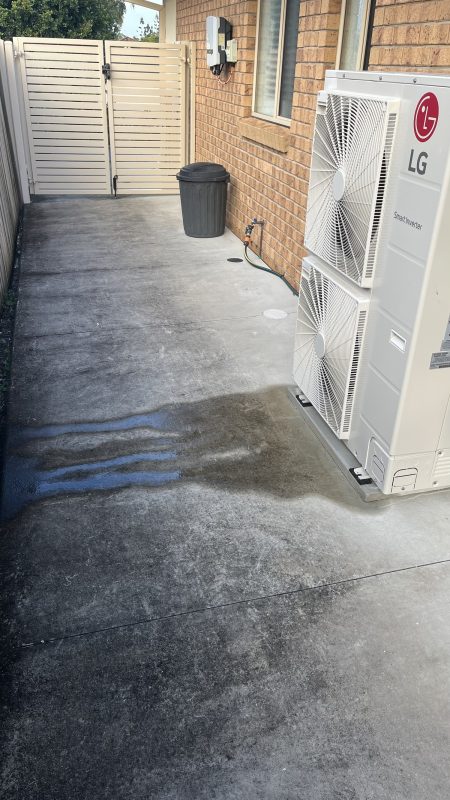AC STORE Specials
Condensation from Air conditioner
The outside unit of your air conditioner contains the condenser and compressor, while the inside unit contains the evaporating coils. When cold liquid refrigerant passes through the evaporating coils, it soaks up the heat from the air inside of your house. That causes the refrigerant to evaporate, or turn into gas, just like water turning to steam when you boil it on the stove. This hot gas travels through the compressor into the condenser, where the heat is released into the outside air as the refrigerant condenses back into a cold liquid, which travels through copper tubing back into the evaporating coils.
You know how a cold can of Coke will sweat on a humid summer day? The same thing can happen with those coils and copper tubes full of cold refrigerant. Humidity in the outside air can condense on them and drip off, leaving a small amount of moisture around your outside unit. When the unit turns off, this normal, small amount of moisture should quickly dry up.
Another way that normal operation can lead to water around the outside unit has to do with the drain line. Humidity from the inside air also condenses on the evaporator coils, drips down into a drain pan, and then drains out of the house through a drain line. If that line exits your house near the outside unit, it could be the source of the water around it. In this case, you simply need to look for the drain line—usually a PVC pipe—and see if there’s water dripping out of it, like there should be when your AC unit is running.


